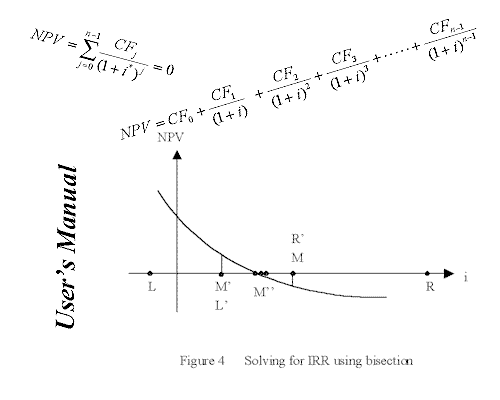

Author -- Dr. James Ko
| This User's
Manual will provide you a thorough understanding on the financial
calculations including derivations of all equations used in this program. We want to make
sure that you use our program with peace of mind. If you use IRR, this booklet gives you instructions on avoiding the misuse of IRRs with Excel or other financial calculators. Precision protects you from the misleading IRRs by returning 'N/A' where numerical figures are not appropriate. If you don't have interest in the technical part, skip ahead. You don't need to know all the technical details to learn the user-friendly Precision financial calculator. Remember to look at the interesting real-world examples. |
|
Example
V-1 Verify IRR
IRR, the Internal Rate of Return, is defined as the discount rate that generates a zero net present value. Verify this by using your own example. [Solution] Create yearly cash flows: -1000,300,300,300,300. This gives you IRR =7.71%. Now, type in 7.71 in the Discount Rate box. The NPV and FV at this discount rate become zero.
Example 1-4
Timing Makes A Difference
[Procedures] If you have the
transaction amount and date data in spreadsheet format, make sure the
first column is the amount and the second column is the date, copy the range
from the spreadsheet, focus the Precision’s cash flows input worksheet
at the first cell, press Ctrl-V to paste the data. Precision supports
Windows OLE copy and paste functionality. This is extremely useful when
you have large amount of data. |